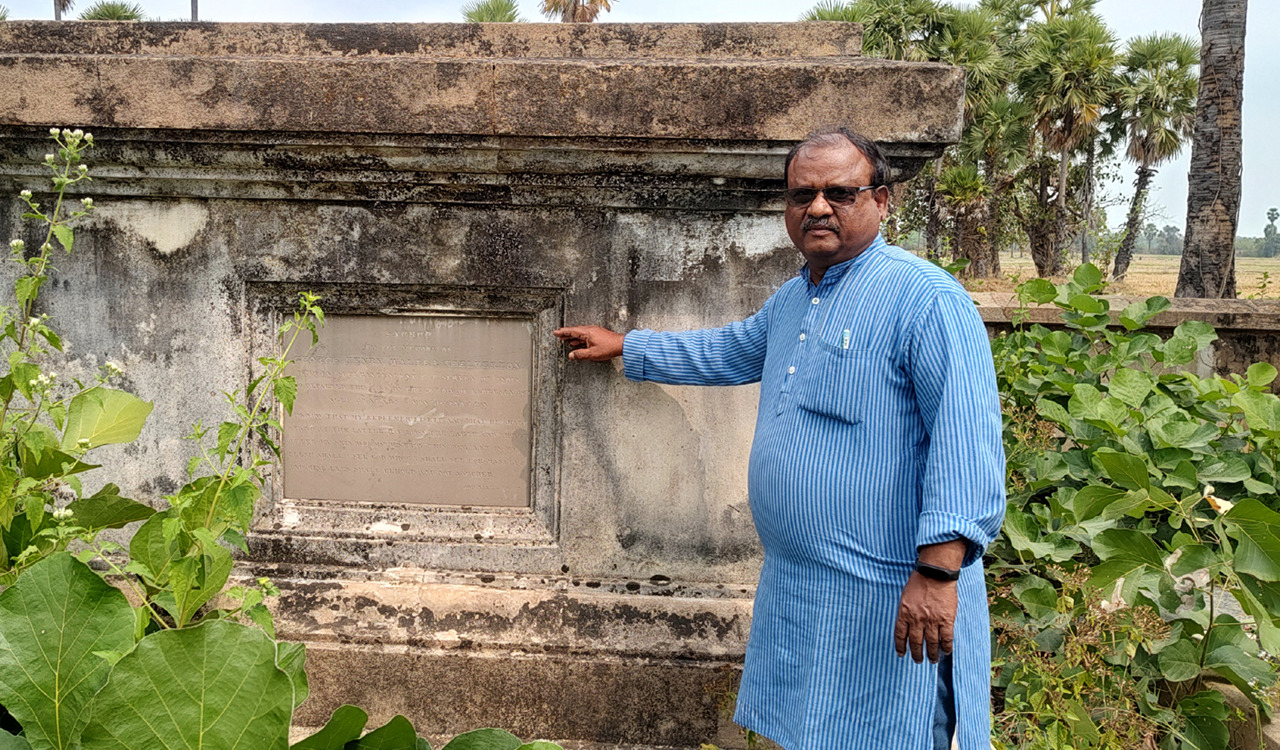The survey began in 1802 by the British infantry officer William Lambton. As a result of the survey, the height of Mount Everest was determined.
Published Date – 9 March 2024, 05:37 PM

Kothagudem: ‘The boast of heraldry, the pomp of power … the paths of glory lead but to the grave,’ wrote noted poet Thomas Grey in his ‘An Elegy Written in a Country Church Yard’.
The banks of River Godavari in Kothagudem district serve proof for this, for here lie some of the servants of the erstwhile British crown, buried in graves in a remote agency village.
Mulakapadu is the village in Dummugudem in Bhadrachalam division in the district where the remnants of the dim and distant colonial rule are still found. Bhadrachalam division was part of the Madras Presidency when the British ruled India.
Among those who were buried here is George Henry Walter Shelverton, the Deputy Director of the Great Trigonometrical Survey of India, which was a part Great Arc Survey carried out across the Indian subcontinent.
The survey began in 1802 by the British infantry officer William Lambton. As a result of the survey, the height of Mount Everest was determined.
The work of Shelverton’s surveying party in Kashmir included determining the height of K2, the second highest Himalayan mountain peak after Mount Everest. A memorial plaque in St. Thomas Church, on Rajpur Road, Dehradun in Uttarakhand also immortalises the work and memory of Shelverton.
He died near Madras on February 26, 1871 after suffering from malaria at the age of 39 years three months and one day, as his tomb plaque reads at Mulakapadu.
The area where the tombs are located has been referred to as ‘Tellolla samadhulu’ (white men’s tombs).The place became popular after a Bhadrachalam based teacher-writer Murthy KVVS wrote about it in his recently published novella, ‘Nirantara Yatrikudu’.
Murthy told Telangana Today that Dummugudem once served as a navigation centre and an inland water transport point connected with Rajahmundry.
There is a small village called Cainpeta, dedicated to the memory of a missionary John Cain of Church Missionary Society in Coastal Andhra who carried out medical service and health care education along with his wife Sarah Cain. Their tomb plaque tells that they came to India in 1875.
John died in 1917 while Sarah died 1934. The locals gather for prayer services every Sunday at the same place where the Cains built a church, which was later replaced by a new structure.
Many old structures at Cainpeta were washed away in the Godavari floods in 1986, but a duplex house built one and half century ago still stands at the village. There is a need to document Dummugudem history, Murthy averred.


